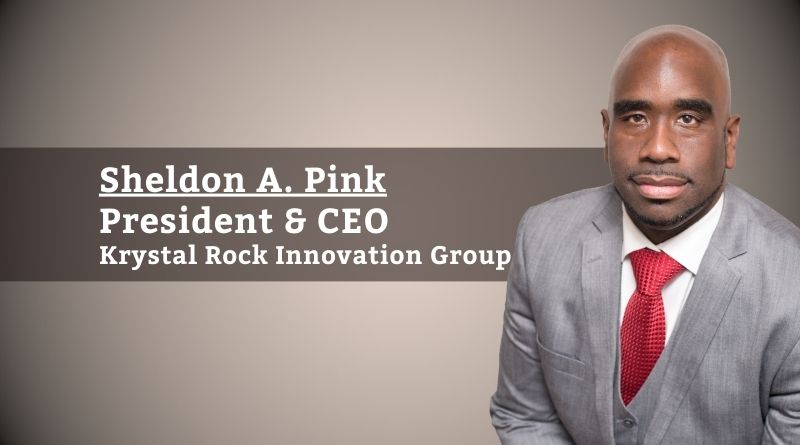The evolving role of automation in the transformation of healthcare revenue cycle
By Sheldon A Pink, President & CEO, Krystal Rock Innovation Group
Automation is taking the healthcare industry by storm. Every organization is exploring opportunities to invest in Robotic Process Automation (RPA), Machine Learning (ML), or Artificial Intelligence (AI). Even though it is now the trend in our industry, it has been used since 2012, when it was introduced to me upon my arrival at a health system based out of Pennsylvania. It was presented to me by an analyst. He lobbied the organization to purchase a program where he could automate the perfunctory functions of the Business Office. He could program accounts to flow to a particular work queue with a Claim Adjustment Reason Code (CARC) from the 835, program the bot to log into different applications to capture data, develop an eclectic spreadsheet, and go to websites to verify eligibility. The main problem was that several computers had to be utilized to perform each function. We had to have desktops allocated to workstations and continually active to perform programmed tasks. Although it was an advancement in our technology journey, much more remained desired.
AI could only accurately predict how long the account will take to achieve a zero balance, but “TRUE” AI should tell you how we got there.
As the emergence of automation grew, the buzzwords that became popular were RPA, ML, and AI. The problem is that many individuals proposing these advancements do not realize the vast differences between each form of technology. Concerns began to grow in the industry because individuals who invested in the wrong tool for a perceived outcome became disbelievers of healthcare innovation. However, the industry dynamics have changed how doubters view automation in the healthcare environment. The need for more automation is hitting us in the face! We have payors who consistently use inaccurate responses that require manual intervention to resolve simplistic issues such as additional documentation, claim edit rejections for minor discrepancies in formatting, and staffing shortages with increased volume. Each of these tools can be used to solve a particular operational issue.
RPA is what was described in my first interaction with healthcare automation. This is the most primitive form of automation. However, it is still an achievement for some organizations without experience with automation. Advantages of RPA include scalability and the ability to perform more overall tasks. RPA bots performing as intended will also provide more accuracy for mundane functions such as work queue assignments, and there will be cost savings. Imagine having five bots resolving Additional Documentation Request (ADR) versus individuals manually retrieving medical records. Not only would you be able to do it more quickly, but you also will not need the number of full-time employees (FTE) required to maintain the volume of work. For instance, three bots may be able to do the same work as 6-8 FTEs. RPA requires constant attention to any rule break that will alter the bot’s actions. An individual must monitor any inconsistencies or gaps in the process, review where the break occurred, and then reprogram it. This can become laborious if systems are constantly being updated.
ML is more intuitive. The bot remembers behavior and adjusts its programming based on actions previously used to achieve the desired outcome. A great epitome of ML is a bot programmed to send a particular response from a payor to a work queue. However, the machine realizes that any time response code 754 goes to the assigned work queue, it is removed and sent to a different system for processing. ML will adjust its behavior and reprogram itself to respond accordingly to response code 754 without manual intervention. The challenges exist when the majority cannot be the rule. For Instance, ADRs are actually clinical denials and require a written appeal. Situations as described are cautionary boundaries for automation in healthcare. However, it is not a reason to deter your organization from developing technological capabilities that will enable your team to be more productive and efficient.
Some skeptics reject the notion of AI in healthcare for good reason. AI can be as harmful as it can be helpful. I don’t believe enough data exists to gain advancements in AI because of the inconsistency, lack of standardization, and perversity of healthcare-adjudicated claims. However, I would prefer to separate clinical and financial AI objectives. I believe there is an opportunity to predict patient outcomes based on comorbidities presented by previous patients’ armamentarium available. We should be able to see what care was provided and the outcomes and conclude. The difference with healthcare financial outcomes is the level of subjectivity on claims with a zero balance. Many inaccurate actions could have occurred to resolve the account; AI could only accurately predict how long the account will take to achieve a zero balance, but “TRUE” AI should tell you how we got there. Conventional wisdom tells us that payors will change their denial behavior once we have made operational improvements. The best example I can provide for AI would be predictive denials. It would be efficacious if a technology existed that could determine the payor plan that begins with a “U” would start to deny future claims based on their pattern and reason codes from previous denials, predicting the change in the pattern.
Innovation in healthcare is required to guide us through the challenges we have ahead of us. It needs to be embraced and managed appropriately to ensure its efficacy.



